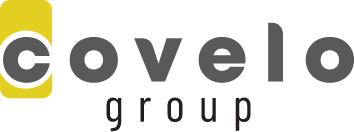- December 6, 2023
- Posted by: Covelo Group
- Category: Educational Services

As we approach 2024, there are challenges ahead for student healthcare. Thankfully, there are also technological trends that will improve healthcare delivery for students in 2024. Here are some challenges and trends for 2024.
The Challenges
Student healthcare workers face multiple challenges in the school setting. Challenges include limited resources and high caseloads, communication challenges, multiple documentation requirements, conflicting needs, and working in isolation.
- Limited resources. School healthcare workers depend on the school’s budget and resources for healthcare. Healthcare is a small fraction of the school’s funding, forcing providers to adjust their approach to healthcare delivery.
- Providers frequently experience challenges communicating with school administration, parents, doctors, and pharmacies regarding student health. Schools have too many priorities and limited resources to meet these communication needs.
- Documentation requirements. School nurses and other providers are responsible for updating and maintaining health records. This time-consuming process keeps school nurses from taking care of students.
- Conflicting needs. Since providing healthcare is not the primary responsibility of the educational system, school healthcare providers must contend with conflicting interests and points of view as they care for students in a school setting.
- School nurses work in isolation. They cannot depend on the advice and support of colleagues.
In 2024, school healthcare providers will face these challenges. Fortunately, technological trends promise to address some of these challenges.
2024 Trends
In 2024, we expect technology to continue impacting healthcare delivery in schools. Technology will help school-based healthcare providers track immunization status, meet reporting requirements, manage communication with parents and guardians, and track health screenings.
- Electronic Health Records. Electronic health records are a vital technology influencing student healthcare and will continue to be in 2024. This technology reduces medical errors, provides relevant information for decision-making, and serves as a tool for increasing student safety while reducing overall healthcare costs.
- Telehealth is a growing trend in school healthcare due to its vast uses. With telehealth, school healthcare providers can address the healthcare needs of students and their families. It can address physical and mental health issues, increase student attendance, and increase the work productivity of parents and caregivers. Telehealth can help reduce infectious disease outbreaks by enabling providers to diagnose and treat illnesses quickly and improve student attendance.
- Wearable Technology. This technology can enable users to track their movements throughout the school day. Metrics like total steps taken, heart rate, run pace, and the amount of quality sleep each night assist individuals in identifying, tracking, and achieving their health and fitness goals. Information can help school healthcare providers establish a starting point for communicating with providers about general wellness goals or other health markers. In 2024, we expect wearable technology to continue advancing to monitor vital statistics.
Covelo Group can help you find a healthcare position in educational services. Let the professional team at Covelo Group connect you with a job to help students focus on their education.

